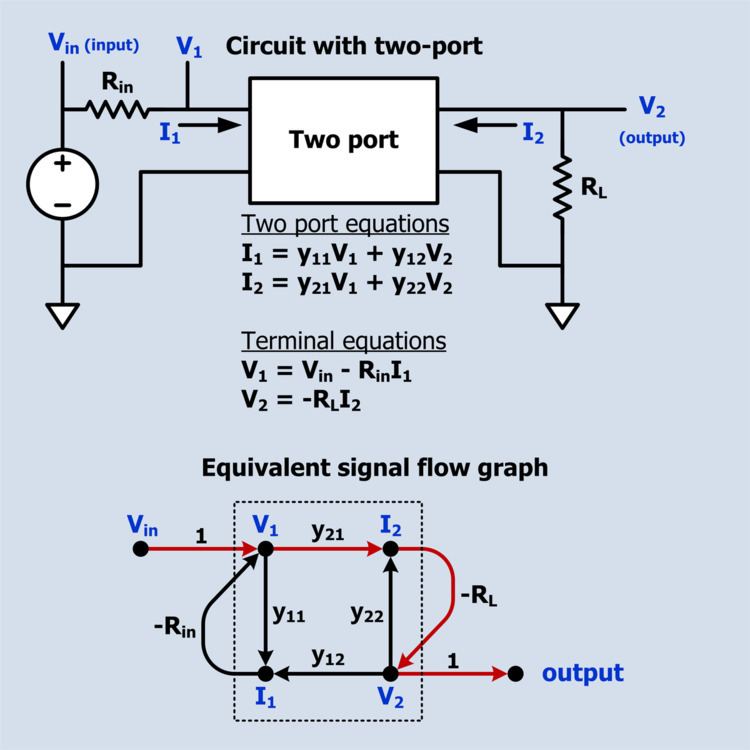 | ||
Mason's gain formula (MGF) is a method for finding the transfer function of a linear signal-flow graph (SFG). The formula was derived by Samuel Jefferson Mason, whom it is also named after. MGF is an alternate method to finding the transfer function algebraically by labeling each signal, writing down the equation for how that signal depends on other signals, and then solving the multiple equations for the output signal in terms of the input signal. MGF provides a step by step method to obtain the transfer function from a SFG. Often, MGF can be determined by inspection of the SFG. The method can easily handle SFGs with many variables and loops including loops with inner loops. MGF comes up often in the context of control systems and digital filters because control systems and digital filters are often represented by SFGs.
Contents
Formula
The gain formula is as follows:
where:
Definitions
Procedure
To use this technique,
- Make a list of all forward paths, and their gains, and label these Gk.
- Make a list of all the loops and their gains, and label these Li (for i loops). Make a list of all pairs of non-touching loops, and the products of their gains (LiLj). Make a list of all pairwise non-touching loops taken three at a time (LiLjLk), then four at a time, and so forth, until there are no more.
- Compute the determinant Δ and cofactors Δk.
- Apply the formula.
Circuit containing two-port
The transfer function from Vin to V2 is desired.
There is only one forward path:
There are three loops:
Digital IIR biquad filter
Digital filters are often diagramed as signal flow graphs.
There are two loopsServo
The signal flow graph has six loops. They are:
There is one forward path:
The forward path touches all the loops therefore the co-factor
And the gain from input to output is
Equivalent matrix form
Mason's rule can be stated in a simple matrix form. Assume
and
Mason's Rule is also particularly useful for deriving the z-domain transfer function of discrete networks that have inner feedback loops embedded within outer feedback loops (nested loops). If the discrete network can be drawn as a signal flow graph, then the application of Mason's Rule will give that network's z-domain H(z) transfer function.
Complexity and Computational Applications
Mason's Rule can grow factorially, because the enumeration of paths in a directed graph grows thusly. To see this consider the complete directed graph on
Yet Mason's rule characterizes the transfer functions of interconnected systems in a way which is simultaneously algebraic and combinatorial, allowing for general statements and other computations in algebraic systems theory. While numerous inverses occur during Gaussian eliminiation, Mason's rule naturally collects these into a single quasi-inverse. General form is
Where as described above,
